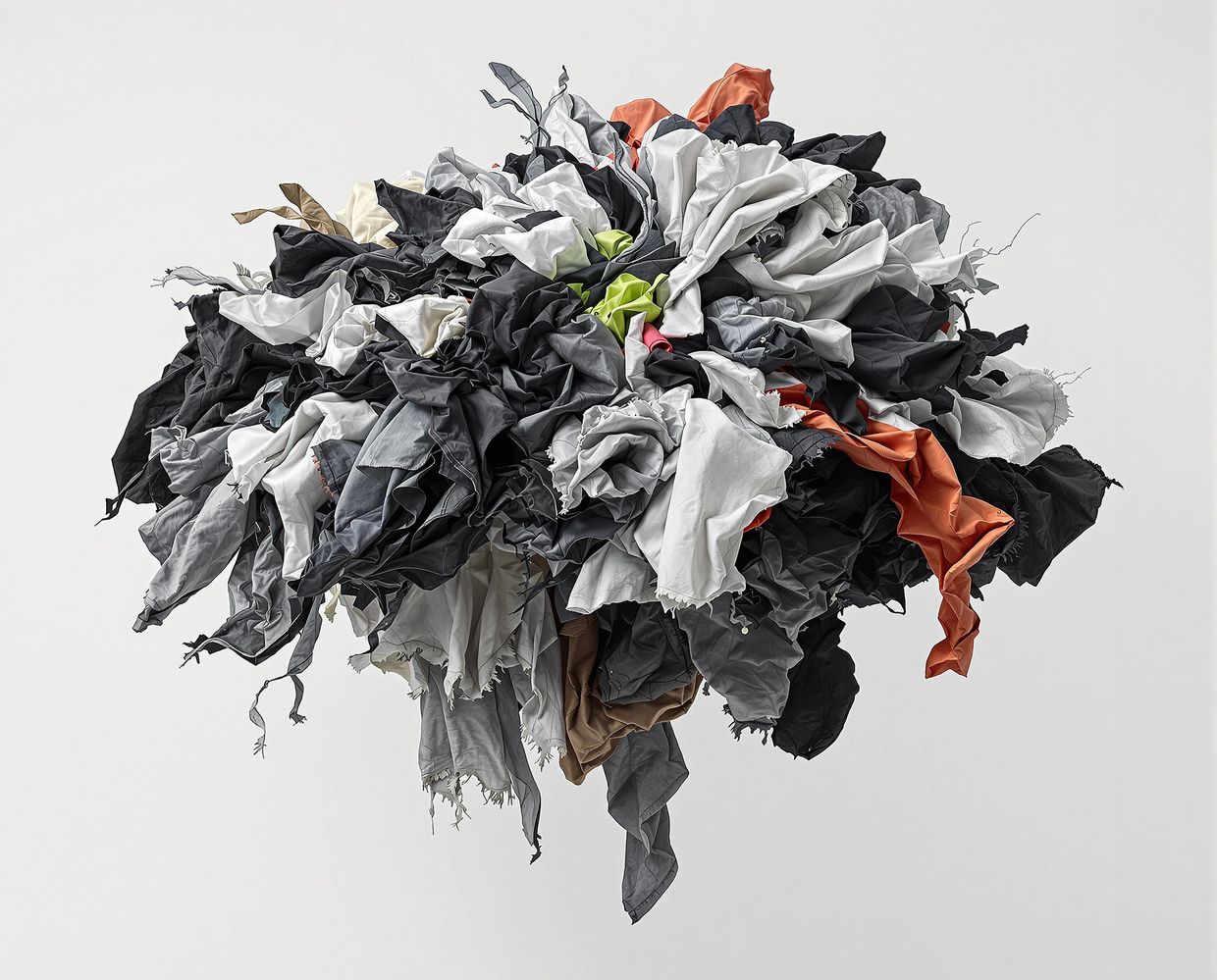Structa: suspended material assemblages

These images take their name from the Latin structa, meaning to heap, build, or assemble. The title reflects the essence of these works: constructions brought into existence not with hands and materials, but with words and artificial intelligence. These synthographs propose a new kind of sculpture — one unbound by gravity, mass, or the limits of matter. They are crafted through text prompts and sculpted from language. They defy easy categorisation: not photographs of real objects, yet undeniably physical in their appearance, as if weight and tension were somehow frozen mid-air. Each assemblage captures a moment of collapse and cohesion — an accumulation of remnants that seem ready to scatter or implode at any second.
The series explores three distinct materialities: fabric, plastic, and metal — each behaving with startling realism. Twisted sheets of blackened metal, frayed cascades of fabric, and the chaotic detritus of discarded plastics are layered into dense, suspended masses. AI reveals an unexpected sensitivity to the textures and behaviours of these materials: fabric droops, folds, and drapes; metal shears, buckles, and twists; plastic crumples, bulges, and cracks. Each sculpture carries a hidden narrative about waste, accumulation, and decay — subtle commentaries on human excess, environmental exploitation, and the strange beauty of discarded things. The fabric and plastic works hint at broader questions about consumption and recycling, drawing attention to the tangled afterlife of the things we throw away.
Each year, the fashion industry produces approximately 92 million tonnes of textile waste, and of the 100 billion garments manufactured annually, less than 1% are ever recycled into new clothing. The fashion industry alone accounts for 10% of global carbon emissions and is the second-largest consumer of water worldwide. Meanwhile, around 400 million tonnes of plastic waste are generated globally every year, with a single plastic bottle taking up to 450 years to decompose. Beneath the suspended forms of Structa lies the disturbing reality of human consumption and its environmental cost: these are monuments to a culture of endless production. They are an architecture of waste — and a meditation on what we leave behind.
“The earth, our home, is beginning to look like an immense pile of filth.“ — Pope Francis
Copyright © David Name 2025.
All rights reserved.